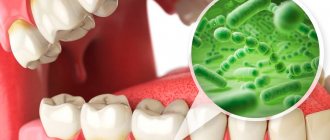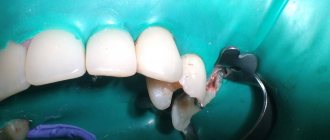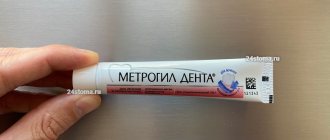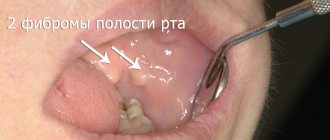In many European clinics, diode lasers are indispensable equipment for solving many oral problems. Foreign dentists always offer their patients two treatment options: conventional therapeutic and laser. According to statistics, about 15% of all manipulations in the mouth are performed using a laser device. In our country, this equipment is not so common, despite its many advantages relative to traditional treatment.
We are pleased to offer our clients laser dental treatment, plaque removal, surgical procedures and dental implantation using a laser device. The center’s specialists have undergone mandatory training to use modern equipment and are happy to offer clients even better treatment and dental restoration.
In combination with a microscope, which allows you to assess the condition of even the most inaccessible places, treatment of teeth and gums, restoration of the dentition will be 10 times more effective and safer than the traditional approach.
Why did we start using lasers in our work?
Modern diode lasers have a relatively low cost. They allow you to work with soft tissues: gums and internal teeth - but even this is enough for their active and varied use in the field of dentistry.
Diode lasers have several programs that are stored in the device’s memory. This allows the doctor to select different parameters for a particular patient and to solve his problem. Modern lasers allow them to be used in many areas of dentistry - from dental treatment and prevention of dental diseases to complex surgical interventions. The laser significantly facilitates the work of the dentist, and for the patient it serves as a guarantor of high-quality treatment without complications and with a shortened rehabilitation period.
Laser installations are a subject of increased interest from scientists who conducted an interesting study of 50 patients. 30 of them were diagnosed with “severe periodontitis” (that is, inflammation of the tissues around the tooth), 20 patients had peri-implantitis (inflammation of the tissues around installed implants). The results of the study, in which laser was the primary treatment method for half of the patients in both groups, were impressive. The laser had no effect on the installed implants and completely destroyed the bacteria. It significantly reduced inflammation.
Advantages of laser in dentistry
- quality of treatment: predicted result, reduced surgical traumatism, better cleansing of the oral cavity from bacteria and relieving inflammation,
- comfort of treatment: the laser provides minimal impact on the nerve endings, so the treatment is practically painless, and the rehabilitation period is reduced by more than 2 times,
- expanded capabilities: the laser allows you to diagnose the condition of teeth and gums, remove caries even at an early stage of inflammation, and create better and more accurate incisions in surgical dentistry.
Diode laser: application in dentistry
Dental treatment
- antiseptic treatment of the cavity inside the tooth,
- cleaning of dental canals,
- excision of the gingival hood during the growth of wisdom teeth, relieving inflammation,
- tooth extraction,
- extraction of hard-to-reach wisdom teeth.
The main area of laser use is dental treatment. Laser beams make it possible to both remove tooth tissue damaged by caries and carry out thorough treatment of tooth canals in the treatment of pulpitis, periodontitis, cysts or granulomas. It is the laser that allows you to “get” to all the branched sections of the dental canals and remove any inflammation, germs and bacteria. The likelihood that a cavity will develop under a filling if the cavity has been cleaned with a laser is incredibly low.
In addition, the laser allows for operations to remove teeth, eliminate cysts and granulomas. During surgery, a laser is used to cut the gum and also treat the socket where the tooth was previously located. Laser beams lightly burn the tissue and stop bleeding, which improves the patient’s condition after surgery - the wound will not bother you, the tissue will recover in just a couple of days.
Laser in dentistry
There are several types of dental laser: diode, argon, neodymium, erbium, carbon dioxide. The difference between the devices is in power, wavelength, point or constant flow of pulses. Each type of laser beam is used for specific procedures. It is used with equal success for therapeutic treatment and surgical intervention.
CDG diode lasers: advantages of use
December 25, 2013
diode laser DenLase
It is safe to say that in people’s minds, laser technologies are the most advanced area of dentistry. The principle of operation of a diode laser is simple - it generates invisible light with a wavelength of 810 nm or 980 nm based on gallium arsenide. Today, laser treatment is becoming more common and is used along with traditional methods. The scope of application of the diode laser is quite extensive: various types of lasers are successfully used for the treatment of soft tissues, gum treatment, and also for teeth whitening. The gentle and gentle effects of laser radiation are especially in demand for patients with a low threshold of pain sensitivity, children, and pregnant women.
UNIDENT presents to your attention diode lasers from China Daheng Group (CDG). Having an affordable price and good quality, the company’s equipment has long become popular in the medical equipment markets of the Pacific region, and has now appeared on the Russian market. China Daheng Group (CDG) was founded in 1987. As a member of and closely cooperating with the Chinese Academy of Sciences (CAS), CDG is engaged in research and development in the field of optical and laser systems and their components.
Scope of application of DENLASE and PENLASE lasers
|
Today, CDG is the largest manufacturer of diodes for laser technology, industrial lasers, and optical guidance systems for lasers in mainland China.
CDG has invested all its experience and accumulated knowledge in the development of two diode laser models: DenLase and PenLase. Each of the models is an ideal embodiment of the unique developments of the CDHD company. Of course, DenLase and Penlase will be of interest to specialists who want to be one step ahead of their colleagues. The DenLase model is a diode laser manufactured using the technology of producing semiconductor laser radiation sources with the main component of the emitted element based on gallium aluminum arsenide (AlGaAs). The principle of operation of the laser is simple: current passes through a diode to produce a monochromatic beam, which, in turn, is focused into a compact point and transmitted through an optical fiber to the treated area. In this case, the wavelength is 810 or 980 nm. The world's leading companies producing this type of product traditionally focus on these values, which are determined by the characteristics of laser energy absorption by soft tissues. The invisible laser beam does not create ionization and works due to temperature effects. The software and ergonomic design, as well as the intuitive, ultra-bright and clear color touch screen, make the entire system easy to operate.
The model is characterized by minimal impact on soft tissue and the ability to quickly stop bleeding during surgery. The controlled radiation is 650 nm/1mW. DenLase is equipped with audible and visual laser warning systems.
PenLase, therapeutic diode laser
Another model from the manufacturer CDG is PenLase, a therapeutic diode laser, the creation of which involved the latest semiconductor laser technologies for the prevention and treatment of teeth. The wavelength of the diode is approximately 810 nm. The PenLase device is air-cooled, which reliably protects it from overheating. The model allows you to carry out any dental procedure on soft tissues with maximum comfort, be it the treatment of abscesses, surgical treatment of the oral cavity, gum retraction or some other manipulation. The user can set the necessary settings for operating modes at input power of 0.7 W and 1.7 W. Two batteries ensure long-lasting operation of PenLase.
ADVANTAGES
|
The proven security system features a kill switch and remote lock that can be connected to the dental office door to turn off the laser when it is opened during a procedure.
Another undoubted advantage of DenLase and Penlase is their complete set. All models are supplied in a metal case; in addition to the main user unit, the package includes consumables (fiber optics), safety glasses and special devices for storing and cutting fiber optics. Thus, the kit contains everything a specialist needs for comfortable work. Undoubtedly, laser dentistry is still gaining momentum. However, it is safe to say that it is the future of dentistry. Step into it with the equipment of China Daheng Group, because with the DenLase and Penlase laser systems, effective treatment without pain and discomfort for the patient is possible today.
The material was prepared by the New Technologies Development Department
Tags: Laser Lasers
More on the topic
Advanced technology for perfect dental restorations
The article summarizes all the experience of building up severely damaged teeth from endodontic therapy to the final installation of a crown on the tooth. We will consider the most relevant techniques and materials for each case.
CDG diode lasers: advantages of use
It is safe to say that in people’s minds, laser technologies are the most advanced area of dentistry. Today, laser treatment is becoming more common and is used along with traditional methods.
Maria Solop: A clinic with a laser always has an advantage
We talked with Maria Solop, an implantologist at the Unident Dentistry network of clinics, about the difficulties faced by clinics and doctors who decide to start working with dental lasers.
Epic 10: a new generation of diode lasers
One of the newest diode lasers on the market today is the Epic 10 from Biolase.
Dmitry Butusov: I am sure that diode lasers will become part of the dental chair
Biolase is a manufacturer that has been driving the dental laser equipment market forward for many years. The new products of the American company are looked at as the future, which comes at the time of the presentation of the next product. This time we would like to introduce you to the chief development engineer of Biolase, Dmitry Butusov, and talk about the development and problems of laser dentistry.
The Academy of Laser Dentistry has appeared in Russia
The new organization, created on the initiative of UNIDENT, should become the first educational institution in our country, uniting the most experienced specialists in this field and providing the opportunity for Russian dentists to undergo comprehensive training in working with laser systems.
Laser systems in dentistry
A seminar on the use of laser systems in dentistry, organized by . The main training issues concerned the use of a hydrokinetic laser in the complex treatment of diseases of hard and soft tissues of the oral cavity and the use of a diode laser for diseases of soft tissues and teeth whitening.
The Case of Laser Technology
The new Waterlase iPlus laser, introduced this year by Biolase, gives dentists the ability to treat both soft and hard tissue at a new level. This is the most modern device, which, however, meets the needs of not only a new generation of dentists, but also specialists who have previously used traditional working methods. It allows the doctor to focus primarily on the treatment, while the technical details of the process are handled by iPlus.
Reimplantitis. Laser. Waterlase
The laser came to Russian dentistry in the early 2000s and today has ceased to be perceived as something revolutionary. It has become the standard for quality dental treatment, for which there are proven protocols and methods. Today we are talking about the treatment protocol for reimplantitis.
Teeth whitening is not just for celebrities
The global teeth whitening market is over $11 billion. The annual growth of this industry provides a completely natural human desire - to have a beautiful smile.
Laser: an effective tool in capable hands
The educational program “Laser dentistry is the key to comfort, status, success,” designed to familiarize specialists with the features of using modern dental lasers, appeared in the early 2000s, shortly after the start of deliveries of Biolase products to the Russian market. Over the years, the seminars have attracted constant interest from the audience.
How we make lasers
The path to establishing the Biolase brand is not easy. Here, for more than twenty years, technologies have been created and developed - perhaps the most complex in the field of laser medicine. Dmitry Butusov, chief engineer and vice president of Biolase, tells his professional story, which is directly related to the history of the company for 18 years.
Advantages and applications of lasers in pediatric dentistry
In 2013, the American Academy of Pediatric Dentistry recognized the use of lasers as an effective tool for restorative dental and soft tissue procedures in infants, children, and adolescents, including children with special health care needs.
Non-contact, safe, no alternative laser
The laser has proven itself in almost all areas of dentistry: it is used to treat gums and teeth, for surgical interventions and even for whitening. The laser has become almost indispensable for allergies to anesthetics and in pediatric dentistry. However, in Russia it still remains only an auxiliary tool for the dentist.
Laser physiotherapy in dentistry
How can we use diode lasers in dentistry today? In fact, the scope of their use is much wider than many people think. Today we want to consider the possibilities and mechanism of using a diode laser in physiotherapy.
A seminar on laser work was held in Yekaterinburg
A seminar on dental lasers was held in Yekaterinburg. UNIDENT regularly conducts training in working with laser systems of various types throughout Russia, attracting leading specialists in this field. Laser dentistry offers truly unique opportunities, and working with modern lasers is quite simple and intuitive for any user.
Laser as an integral part of modern dentistry
For the patient, the use of a laser by a doctor indicates that the specialist he has consulted is striving to improve the method of treatment being performed. More importantly, the laser is an extremely effective clinical tool.
CDG diode lasers: advantages of use
It is safe to say that in people's minds, laser technologies are the most advanced area of dentistry. Today, laser treatment is becoming more common and is used along with traditional methods. Return to section
Therapeutic laser dental treatment
In therapeutic dentistry, laser therapy is used in the following cases:
- Relieving inflammation.
When treating gingivitis, stomatitis or herpes, electromagnetic waves are directed to the source of infection and destroy pathogenic bacteria. - Sterilization.
Periodontal pockets and tooth canals are treated with a diode laser before installing a filling. - Treatment of caries.
Affected tissues are effectively removed using an erbium apparatus. - Filling.
Curing of light polymer fillings occurs under the influence of an argon laser. - Teeth whitening.
The laser beam activates the hydrogen peroxide-based whitening gel without heating the tooth tissue, that is, without the risk of overheating or burning the pulp. Thanks to the local pulse effect, the patient does not experience discomfort during the procedure.
Indications for use
- Primary carious lesions in the area remote or close to the pulp;
- Secondary carious lesions that contain composites (smaller cavities or remains of composite) or cements;
- Conditioning the dentin surface to improve the adhesion of fillings in cavities that have been prepared using a laser or rotary instrument;
- Preventive sealing of molars and premolars not affected by caries;
- Extended fissure sealing after preliminary preparation of carious fissures;
- Reducing the number of microorganisms in the root canal after mechanical treatment during vital extirpation or treatment of an infected canal.
Application of laser in dental surgery
During surgery, a laser device is used for painless and bloodless tissue dissection—during the procedure, the beam instantly seals the vessels. The incision is smaller and thinner than with a scalpel, so no stitches are required during the operation, and after the wounds heal there are no scars or scars. In dental surgery, laser is used to solve the following problems:
- Removal of tumors.
The liquid inside the papilloma, cyst or fibroma is evaporated under the influence of electromagnetic waves. - Carrying out dental implantation.
Thanks to the laser, implant installation is delicate. Thanks to laser implantation, the soft tissue contour is better preserved. - Plastic surgery of the frenulum of the lips and tongue.
The fold is excised lengthwise or crosswise depending on the clinical case. - Gum correction.
Excess tissue is trimmed before prosthetics, filling or orthopedic treatment. The laser is also used for gum surgery after implantation or if there are other indications.
Indications and contraindications
With the help of electromagnetic waves, it is possible to achieve positive therapeutic results even in the most difficult situations, and the absence of the need for anesthesia allows the device to be used for people with allergies to painkillers. The use of laser in dentistry is one of the safest and most effective methods of treatment, which is indicated for almost everyone. However, there is still a small list of contraindications.
- Nervous system disorders
- Late stage diabetes mellitus
- Kidney failure
- Oncological diseases
- Pregnancy (1 - 6 months)
- Open tuberculosis
- Elevated thyroid hormone levels
- Allergy to sun rays
Attention!
Insufficient qualifications of a specialist and failure to comply with safety rules significantly increase the risk to the patient’s health during laser treatment. Contact only trusted clinics, where your eyes are protected from radiation with special glasses, and the room is brightly lit during the procedure.
GENERAL PROVISIONS:
1.1.
This Policy regarding the processing of personal data (hereinafter referred to as the Policy) is drawn up in accordance with clause 2 of Art. 18.1 of Federal Law No. 152-FZ of July 27, 2006 “On Personal Data” as amended by Federal Law No. 16 of February 22, 2017, and is the fundamental internal regulatory document of the Limited Liability Company “SELLADENT” (hereinafter referred to as the Organization), defining key areas its activities in the field of processing and protection of personal data (hereinafter referred to as PD), the operator of which is the Organization. 1.2. The policy was developed in order to implement the requirements of the law in the field of processing and protection of personal data and is aimed at ensuring the protection of the rights and freedoms of an individual and citizen when processing his personal data in the Organization, including the protection of rights to privacy, personal, family and medical secrets.
1.3. The provisions of the Policy apply to relations for the processing and protection of PD received by the Organization both before and after approval of the Policy, except for cases where, for reasons of legal, organizational and other nature, the provisions of the Policy cannot be extended to relations for the processing and protection of PD received before its approval.
1.4. PD processing in the Organization is carried out in connection with the Organization’s performance of the functions provided for by its constituent documents and determined by:
- Federal Law of November 21, 2011 No. 323-FZ “On the fundamentals of protecting the health of citizens in the Russian Federation”;
- Federal Law No. 152-FZ of July 27, 2006 “On Personal Data”; Federal Law No. 16 dated February 22, 2017
- Decree of the Government of the Russian Federation of September 15, 2008 No. 687 “On approval of the Regulations on the specifics of processing personal data carried out without the use of automation tools”;
In addition, the processing of personal data in the Organization is carried out in the course of labor and other directly related relations in which the Organization acts as an employer (Chapter 14 of the Labor Code of the Russian Federation), in connection with the implementation by the Organization of its rights and obligations as a legal entity.
1.5. The organization has the right to make changes to this Policy. When changes are made, the date of the last update of the edition is indicated in the title of the Policy. The new version of the Policy comes into force from the moment it is posted on the website, unless otherwise provided by the new version of the Policy.
1.6. The current edition is stored at the location of the Organization at the address: Moscow, st. Novoryazanskaya 38, building 3, electronic version of the Policy - on the website at: https://www.al-bis.ru/about/confidential/
Advantages of the method
Today, laser dental treatment in Moscow is widespread in dentistry. Despite the high cost, it is deservedly popular among patients who appreciate the advantages of laser treatment.
- Delicacy.
The absence of unpleasant noise and vibrations makes the operation easier. - Short duration of procedures.
Depending on the nature of the manipulations, the process takes from two to twenty minutes. - No need for anesthesia.
The device does not touch the tissues of the teeth and gums, but acts at a distance, so there is no pain from mechanical action. - Accuracy.
The rays are directed only at the affected tissues, healthy areas are not damaged. - Reduced injury rates.
The laser seals the vessels and edges of the wound, so even complex operations do not require stitches and bandages to stop bleeding. - Fast rehabilitation.
After treatment, the incision heals in a matter of hours and is not accompanied by swelling or pain.
Treatment of caries with ozone –
Non-contact treatment of caries with ozone consists in the fact that tissues affected by caries are not removed mechanically (or their removal is minimized), but are disinfected using ozone molecules. The latter is triatomic oxygen, which is capable of destroying 99.99% of all cariogenic microorganisms in the carious cavity. You can see what a device for treating caries with ozone looks like in the video below.
The course of the procedure for treating caries with ozone - first, a silicone cap specially provided by the manufacturer is applied to the tooth (Fig. 5-7), from under which air is pumped out and something close to a vacuum is created. Then ozone is supplied to the cap, which acts on the microflora, killing 99.9% of all pathogenic bacteria. Within 20-30 seconds, all cariogenic microorganisms die.
- The advantages of treating caries with ozone are that you can treat teeth without a drill (but only very small carious defects), in other cases you will still have to drill, which means you will have to do anesthesia. That's basically it.
- Disadvantages of dental treatment with ozone: in 99% of cases, teeth will still have to be drilled.
If you do not drill, a large amount of tissue may remain inside and outside the tooth, which is relatively softened and cannot bear the full load. Imagine that you are placing a permanent filling on demineralized soft dentin or enamel (and it is hard). As a result, when teeth are closed and when chewing hard food, the load placed on the filling will be transferred to the surrounding tissues (enamel and dentin), which are softened and cannot withstand such a load. There will be pressure, the filling will fall out... As a result, the tooth will have to be treated again.
Conclusions: the use of such devices is advisable only in pediatric practice, when it is not possible to use a drill. In this case, the softened dentin and enamel are first scraped out with curettage spoons, but before this, it is optimal to apply a special enzyme gel into the carious cavity, which dissolves the carious tissue. And only after this the remaining tooth tissue is disinfected with ozone and a filling is placed. How enzyme gels work – read below.
Treatment of cysts and granulomas with laser
Granuloma usually occurs as a result of poor treatment of caries and pulpitis. The disease is asymptomatic at the first stage, and is later accompanied by swelling of the gums, pain and darkening of the enamel. When treating dental granuloma with a laser, the affected area is drilled and an electromagnetic beam is sent into the hole, destroying the contents of the cyst and sealing the vessels. The doctor then installs a filling.
Without timely treatment, the granuloma develops into a cyst, which can provoke even more serious complications. Gentle treatment of dental cysts with a laser is considered a good method, as it allows you to save the tooth. The procedure takes place without pain, stress and stitches. In addition, treatment of a dental cyst with a laser without removal eliminates the risk of re-development of inflammation. The patient’s comfort and the absence of complications justify the additional costs, because the price when treating a dental cyst with a laser is higher than when using other methods.
How much does laser dental treatment cost?
As a rule, prices for laser dental treatment in Moscow depend on the type of dental disease and the severity of the pathology. You must be prepared for the fact that in any case it will be significantly higher than when using classical methods. Treatment of caries at the initial stage of the disease will cost from 800 rubles. The price for treating a dental cyst with a laser without removal will be approximately 1,500 to 2,000 rubles. For laser whitening you will have to pay from 8,000 to 11,000 rubles.
Obviously, the high cost of therapy is the only drawback of this technology. However, numerous rave reviews about laser dental treatment confirm the fact that patients are willing to pay for comfort, efficiency and peace of mind, the absence of irritating drill sounds and the frightening prospect of using anesthetics.
PRINCIPLES FOR SECURITY OF PERSONAL DATA
3.1. The main task of ensuring the security of personal data during their processing in the Organization is to prevent unauthorized access to it by third parties, to prevent intentional software, hardware and other influences for the purpose of stealing personal data, destruction (destruction) or distortion of them during processing.
3.2. To ensure the security of personal data, the Organization is guided by the following principles:
- legality: protection of personal data is based on the provisions of regulatory legal acts and methodological documents of authorized state bodies in the field of processing and protection of personal data;
- systematic: PD processing in the Organization is carried out taking into account all interconnected, interacting and time-varying elements, conditions and factors that are significant for understanding and solving the problem of ensuring PD security;
- comprehensiveness: PD protection is built using the functionality of information technologies implemented in the Organization’s information systems and other systems and protection means available in the Organization;
- continuity: PD protection is ensured at all stages of their processing and in all modes of operation of PD processing systems, including during repair and routine maintenance;
- timeliness: measures to ensure an adequate level of PD security are taken before the start of their processing;
- continuity and continuity of improvement: modernization and expansion of measures and means of protecting personal data is carried out based on the results of an analysis of the practice of processing personal data in the Organization, taking into account the identification of new ways and means of implementing threats to the security of personal data, domestic and foreign experience in the field of information protection;
- personal responsibility: responsibility for ensuring the security of personal data rests with the Employees within the limits of their responsibilities related to the processing and protection of personal data;
- minimization of access rights: access to personal data is provided to Employees only to the extent necessary to perform their job duties;
- flexibility: ensuring the fulfillment of personal data protection functions when the characteristics of the functioning of the Organization’s personal data information systems, as well as the volume and composition of processed personal data change;
- specialization and professionalism: the implementation of measures to ensure the security of personal data is carried out by Employees who have the necessary qualifications and experience;
- efficiency of personnel selection procedures: the Organization’s personnel policy provides for careful selection of personnel and motivation of Employees, allowing to eliminate or minimize the possibility of them violating the security of personal data;
- observability and transparency: measures to ensure the security of personal data must be planned so that the results of their application are clearly observable (transparent) and can be assessed by those exercising control;
- continuity of monitoring and evaluation: procedures for continuous monitoring of the use of PD processing and protection systems are established, and the results of monitoring are regularly analyzed.
3.3. The Organization does not process PD that is incompatible with the purposes of its collection. Unless otherwise provided by federal law, upon completion of personal data processing in the Organization, including when the goals of their processing are achieved or the need to achieve these goals is no longer necessary, the personal data processed by the Organization will be destroyed or depersonalized.
3.4. When processing personal data, their accuracy, sufficiency, and, if necessary, relevance in relation to the purposes of processing are ensured. The organization takes the necessary measures to delete or clarify incomplete or inaccurate personal data.










